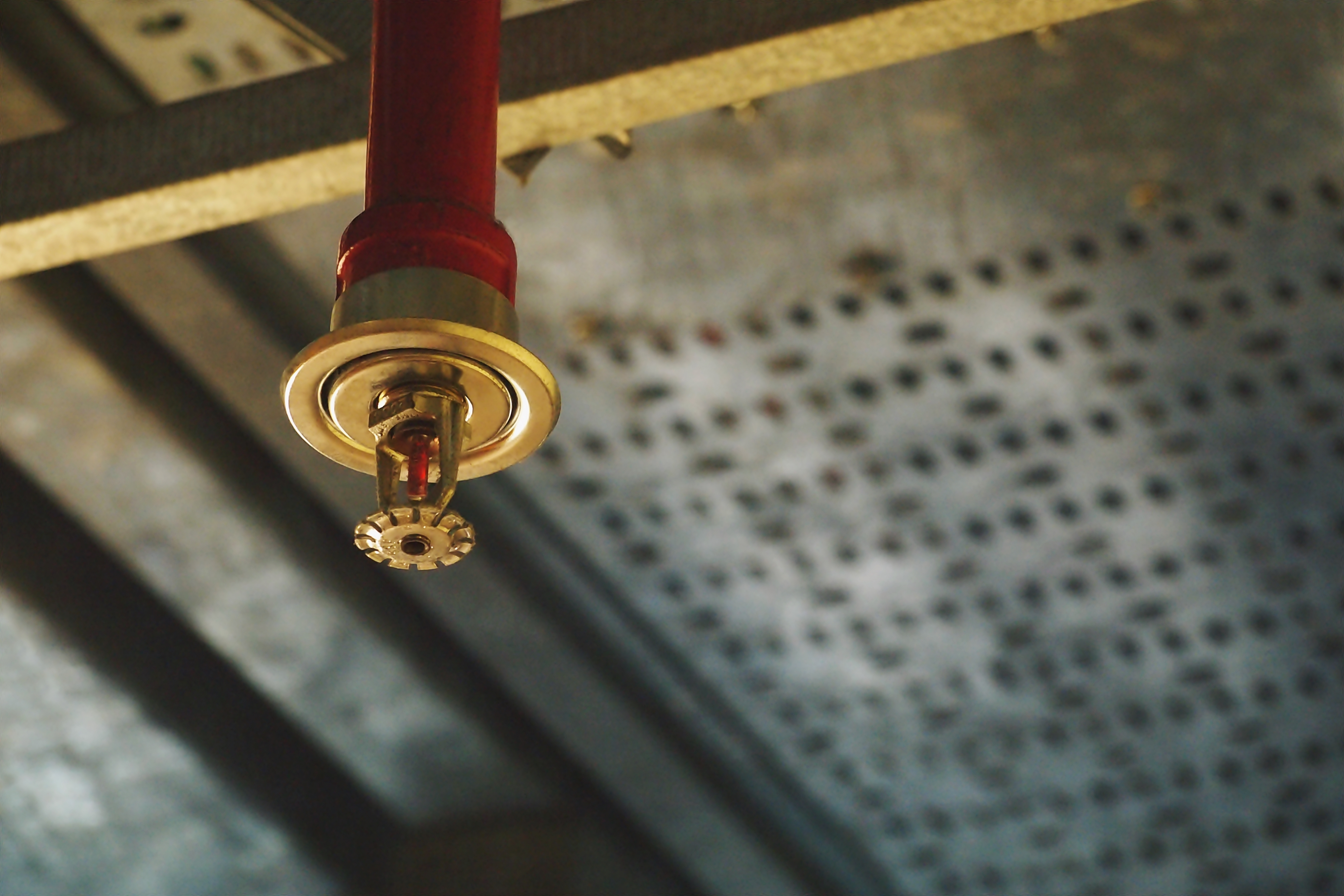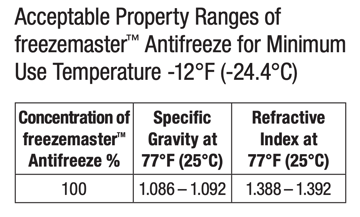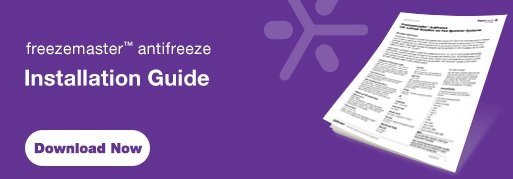
Why NFPA Requires Annual Antifreeze Testing
Have you ever wondered why antifreeze in water-based fire sprinkler systems requires yearly testing before the onset of freezing weather?
Simply put, testing ensures that the antifreeze maintains its proper concentration and freeze point. It must always remain in a liquid state and address the life safety issues associated with antifreeze use. To ensure this, the concentration of antifreeze solution should always be no more than the least amount necessary for the anticipated minimum temperature.
In the event of leaks, pressure surges or temperature changes to the system, antifreeze can flow out of the system or water can flow into the system, leading to changes in the freeze temperature and antifreeze concentrations.
If concentration conditions deviate from allowable tolerances, as illustrated by the chart below for freezemaster™ antifreeze, the fluid must be replaced. Because freezemaster™ antifreeze is a UL-listed, safe to use, factory premixed antifreeze, the percent concentration by volume would always be 100 percent.

This is why NFPA standards require antifreeze to be tested for composition effectiveness annually at the most remote portion and where it interfaces with the wet pipe system. For systems over 150 gallons, one additional test point is conducted every 100 feet. If a sample shows a concentration outside the desired range, the system must be drained and refilled.
Testing is conducted by a qualified inspection, testing and maintenance (ITM) service in compliance with NFPA 25: Standard for the Inspection, Testing, and Maintenance of Water-Based Fire Protection Systems or the local authority having jurisdiction (AHJ).
The inspector measures the specific gravity or the refractive index of the system antifreeze; either approach is acceptable. Each one of these tests requires the correct instrument. A laboratory grade hydrometer must be used to measure specific gravity. Either an analog or a digital refractometer must be used to measure refractive index. These instruments must be calibrated annually to reduce the risk of incorrect test results.
Upon completion of this process, NFPA requires a tag to be affixed to the riser indicating the date tested or replaced, the type and concentration by volume of fluid used, system capacity (by volume), the contractor’s name and license number, and a statement indicating if the entire system was drained and replaced with antifreeze.
This process is made even easier with freezemaster™ antifreeze’s unique coloring. While the other UL-listed alternative is clear, freezemaster™ antifreeze is dyed blue so contractors are able to see the material as it exits the vents and drains when flushing and filling systems during the fill process. In what other ways is freezemaster™ antifreeze a breakthrough freeze protection technology like no other?
- freezemaster™ antifreeze includes a corrosion inhibitor package unlike any other product on the market, effectively reducing pipe corrosion by up to 65 percent.
- Unlike the other UL-listed alternative, freezemaster™ antifreeze is permitted for use in galvanized piping systems.
For additional details about the care and maintenance of freezemaster™ antifreeze, download the Installation Guide.

